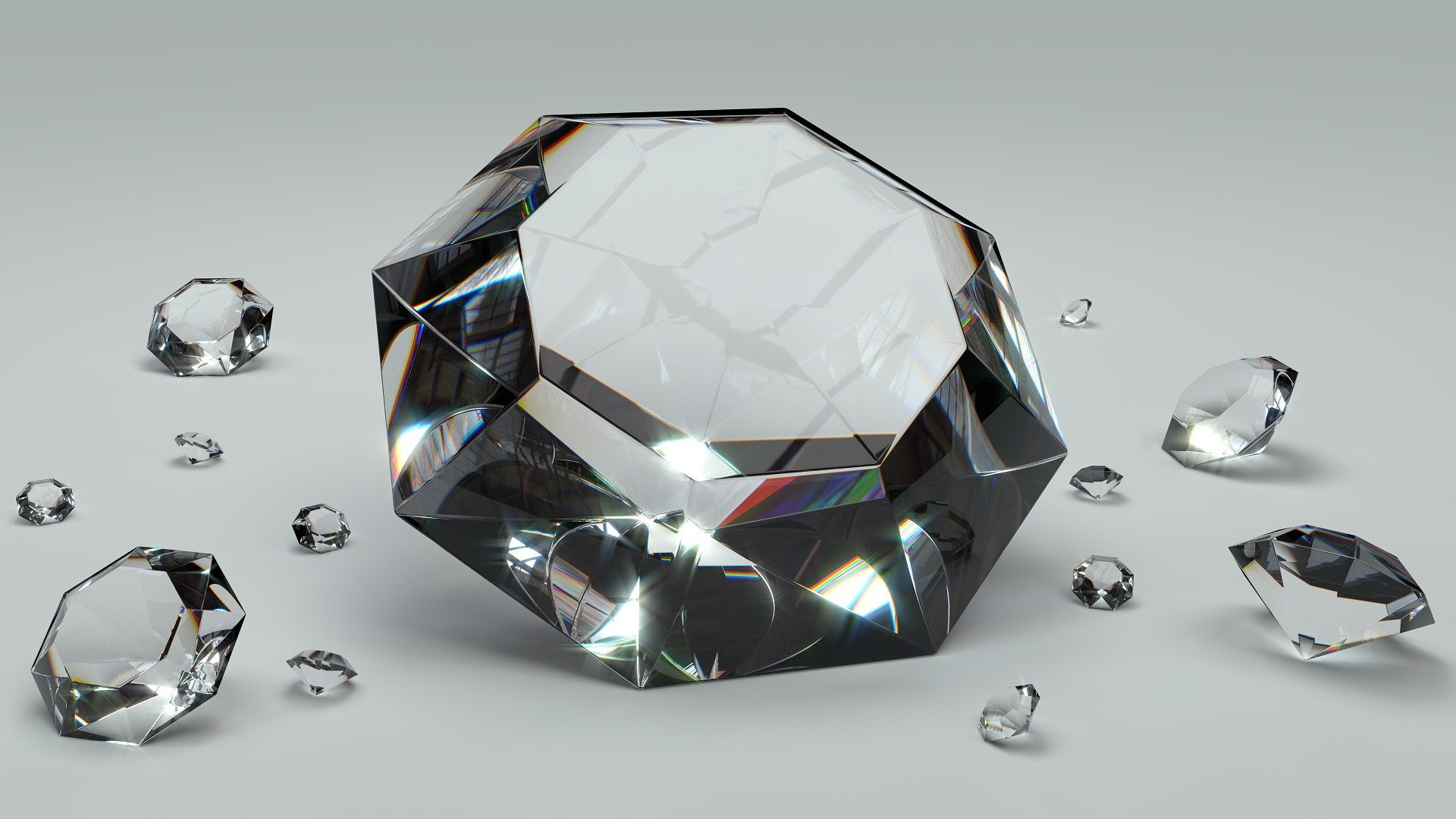Diamonds occupy a special place in the hearts of women similar to that which gold holds in the hearts of men, a product of the Earth’s internal forces that is so beautiful to gaze upon it becomes precious to us. Natural diamonds are formed deep beneath the ground, around 180 to 245 kilometres under the Earth’s surface. Pressures at those extreme depths reach 50,000 atm. An ATM means one atmosphere, equivalent to the level of air pressure found at sea level. The temperatures in these deep recesses of the Earth range from 900º to 1,300º C, about one-fifth of the sun’s surface temperature! It’s these incredibly intense conditions that compress the element carbon into its most compact form possible, resulting in the creation of diamonds in the magma. The eruptions of ancient volcanoes lifted these diamonds up to the surface for us to find them.
Never content to be satisfied with the gifts the Earth provides us, humanity’s hunger for the allure of these precious stones eventually resulted in the invention of artificial processes that can create manufactured diamonds that come very close to having the same physical, optical, and chemical properties as natural diamonds grown in the Earth.
There are two main production methods for creating lab-grown diamonds, which we will now examine:
The HPHT Process – HPHT stands for high pressure/high temperature and is mostly used to manufacture synthetic diamonds for industrial use. The HPHT process was developed in the 1950s and was the first diamond synthesis method. The process involves placing a capsule containing a carbon starting material made up of several metals along with graphite, a common mineral composed of pure carbon, together with a tiny diamond seed into a press. The capsule is heated to around 1,600º C under a pressure of up to 60,000 atm. The graphite is dissolved in the metals (iron, cobalt, and nickel), and then crystallises around the diamond seed to form a manufactured diamond. The HPHT process can take from several hours to weeks at a time, depending on the desired quality and size of the desired stone.
The CVD Process – CVD stands for chemical vapour deposition and is popular for manufacturing synthetic diamonds used for jewellery. The process involves filling a chamber with a gas mixture that includes hydrogen, oxygen, and carbon. A thin sliver of diamond seed or graphite is placed within and heated to 900º C by microwaves or lasers. The heat causes the carbon to precipitate out of the gas mixture and crystallize into a manufactured diamond. The CVD process can range from days to weeks, depending on the size and quality of the stones desired. The CVD process allows dozens of stones to be grown at the same time.
The Australian Government’s Geoscience Australia has a great deal of information on diamonds. At one time natural diamond quality was subdivided into gem and near-gem categories, but the development of manufactured diamonds in the industry has resulted in nearly all natural diamonds being utilised for jewellery, while only 3% of industrial diamonds are non-synthetic. The manufactured diamond may be artificial, but it still has that beautiful shine.







